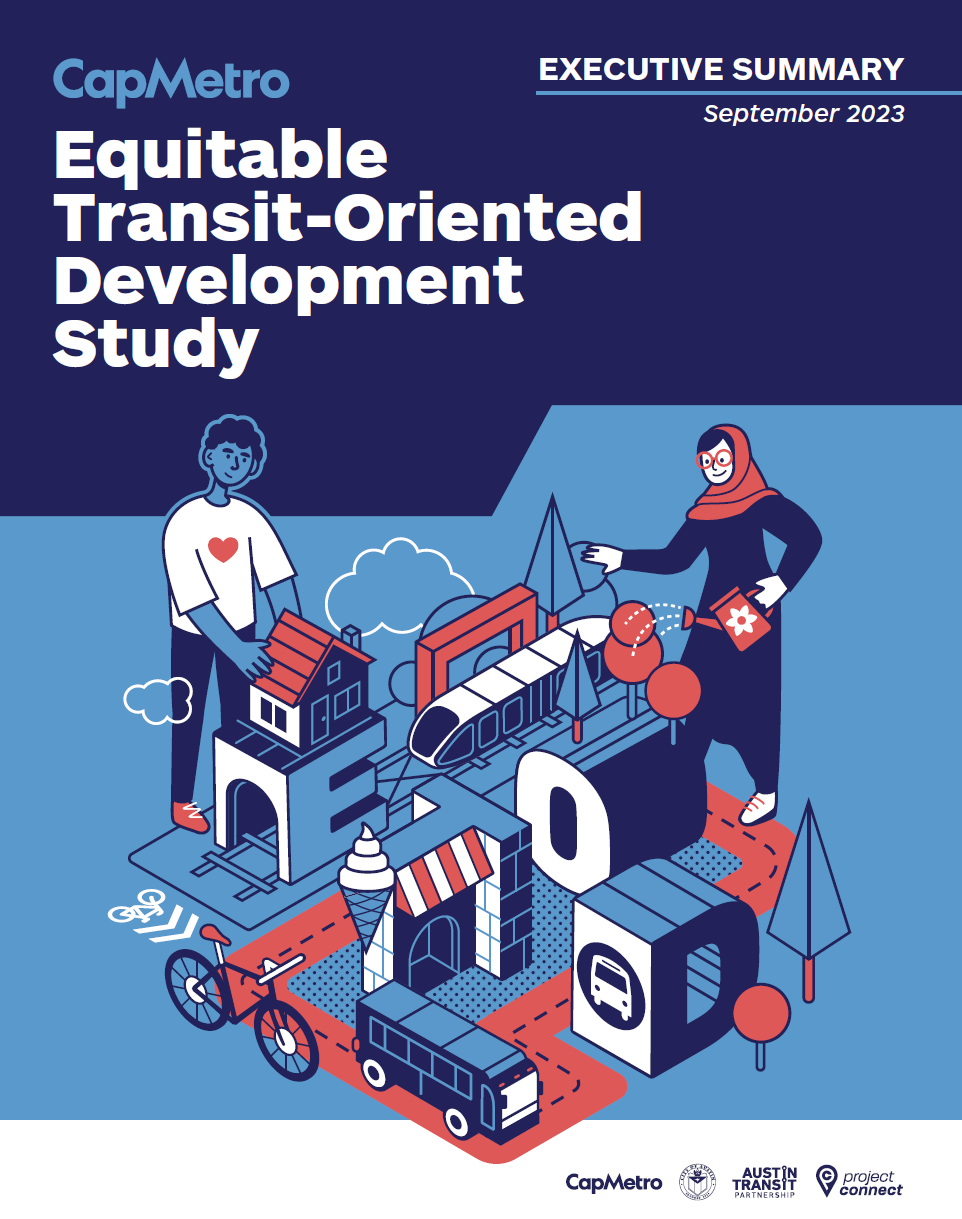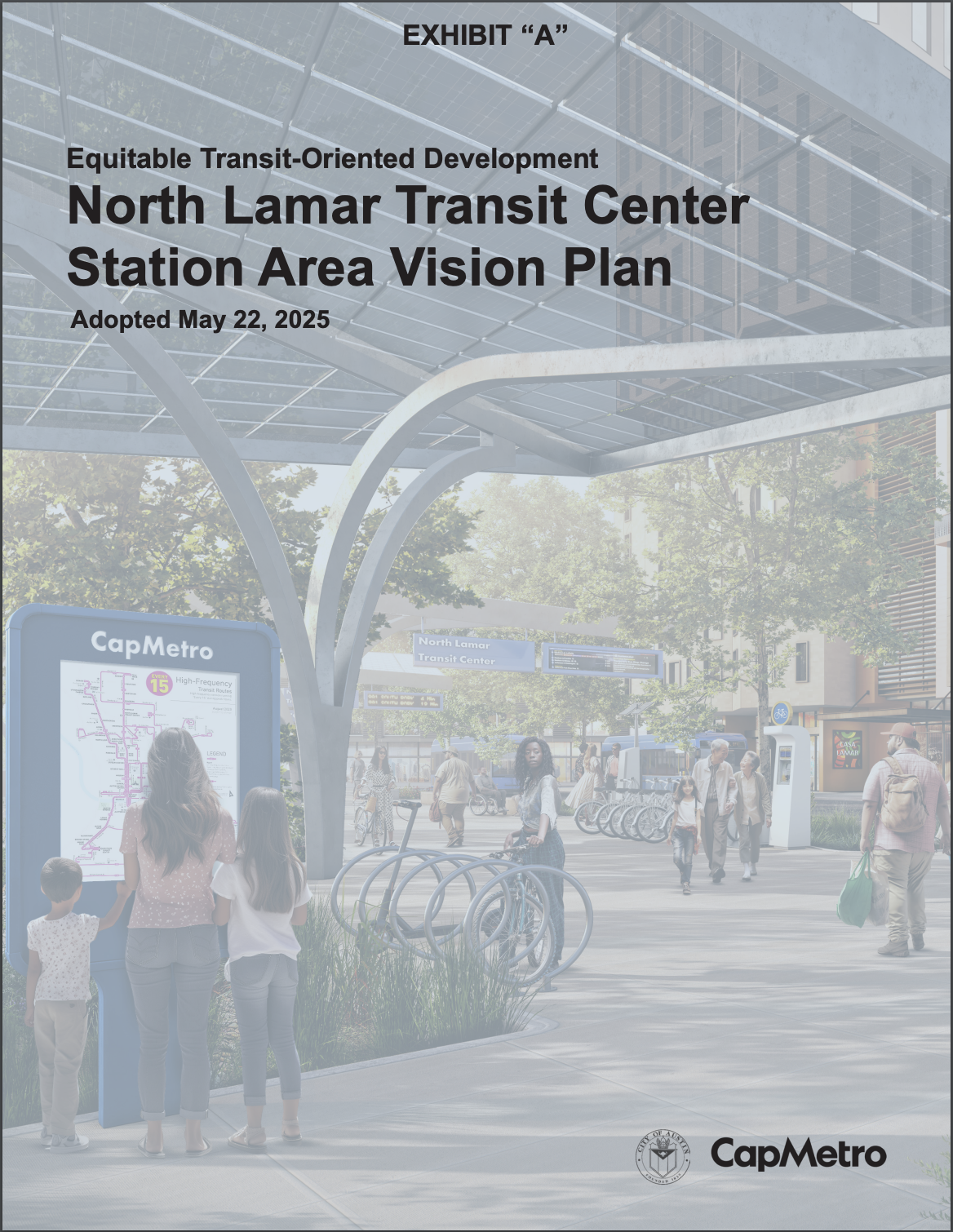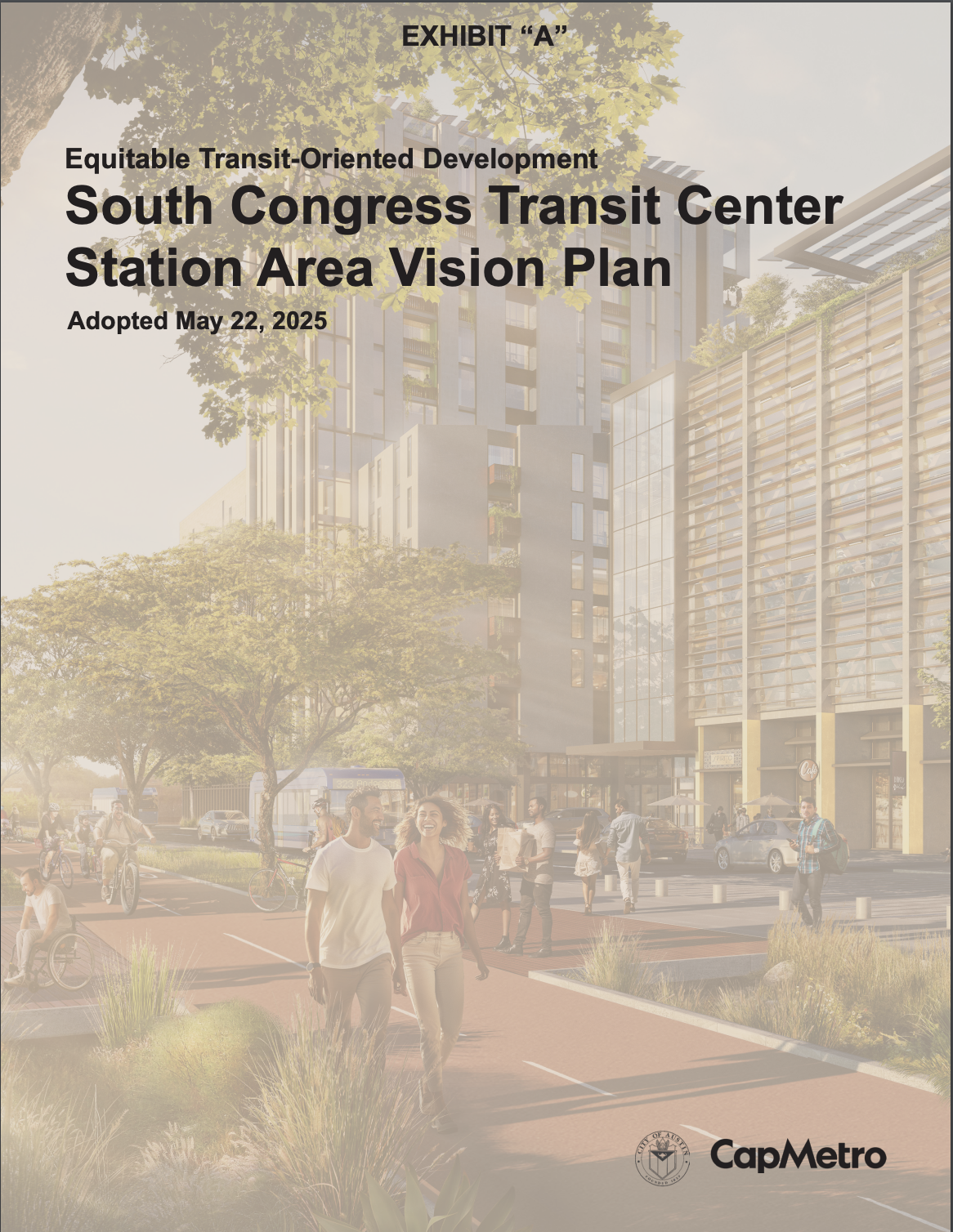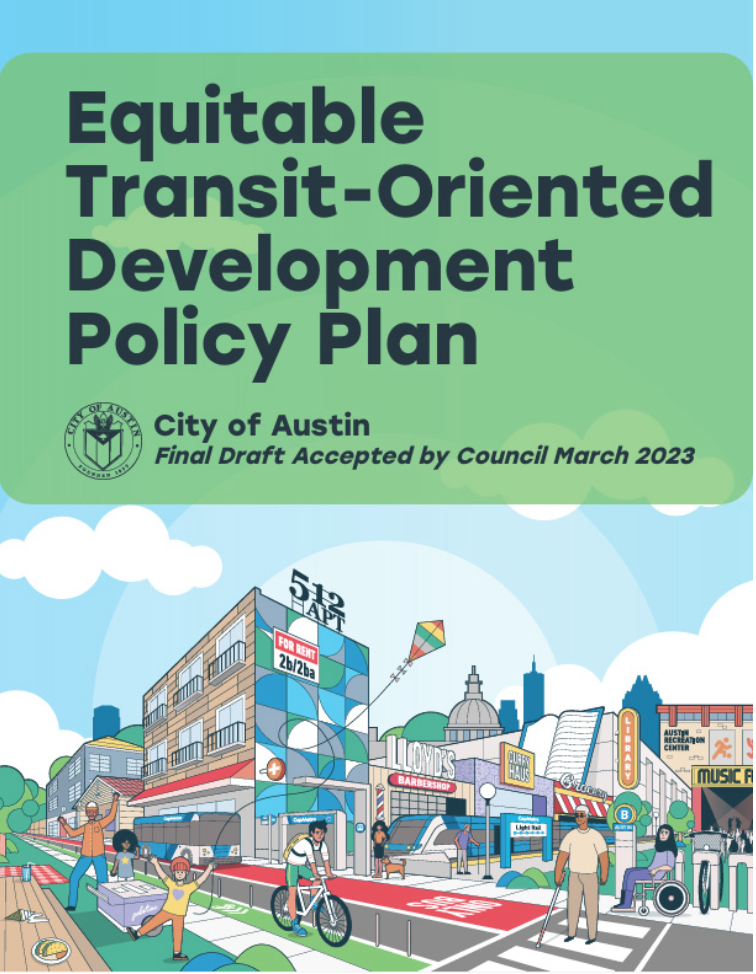
Transit-Oriented Development (TOD)
Working Toward Implementation
The CapMetro TOD team has been hard at work to move into the implementation phase. Two documents will be shared here in the coming months that help formalize CapMetro's approach to transit-oriented development.

TOD Guidebook: The CapMetro TOD Guidebook will establish a vision for transit-oriented development at CapMetro and define a process for implementation. The Guidebook will provide transparency on CapMetro TOD priorities and values, and it will inform the development community, Member City and agency staff, contractors, and the general public about our development process.
Transit Development Guidelines: The Transit Development Guidelines (TDG) document is a companion to the TOD Guidebook. It will explain how to integrate transit-supportive amenities into development projects—particularly when the land is not owned by CapMetro. The TDG will provide information to developers about how to work with CapMetro and answer common questions upfront.
TOD at CapMetro
Transit-oriented development (TOD) is a planning strategy to promote compact, mixed-use, pedestrian-friendly communities built around multi-modal transit hubs. TOD at CapMetro strives to create prosperous communities, full of opportunity, that promote healthy growth for children and families in Central Texas.
Successful TODs must create safe, walkable communities while also making the surrounding area more accessible through robust transit options. Good transit means better access to daily life for everyone, from lifelong residents to students, visitors, workers and retirees.
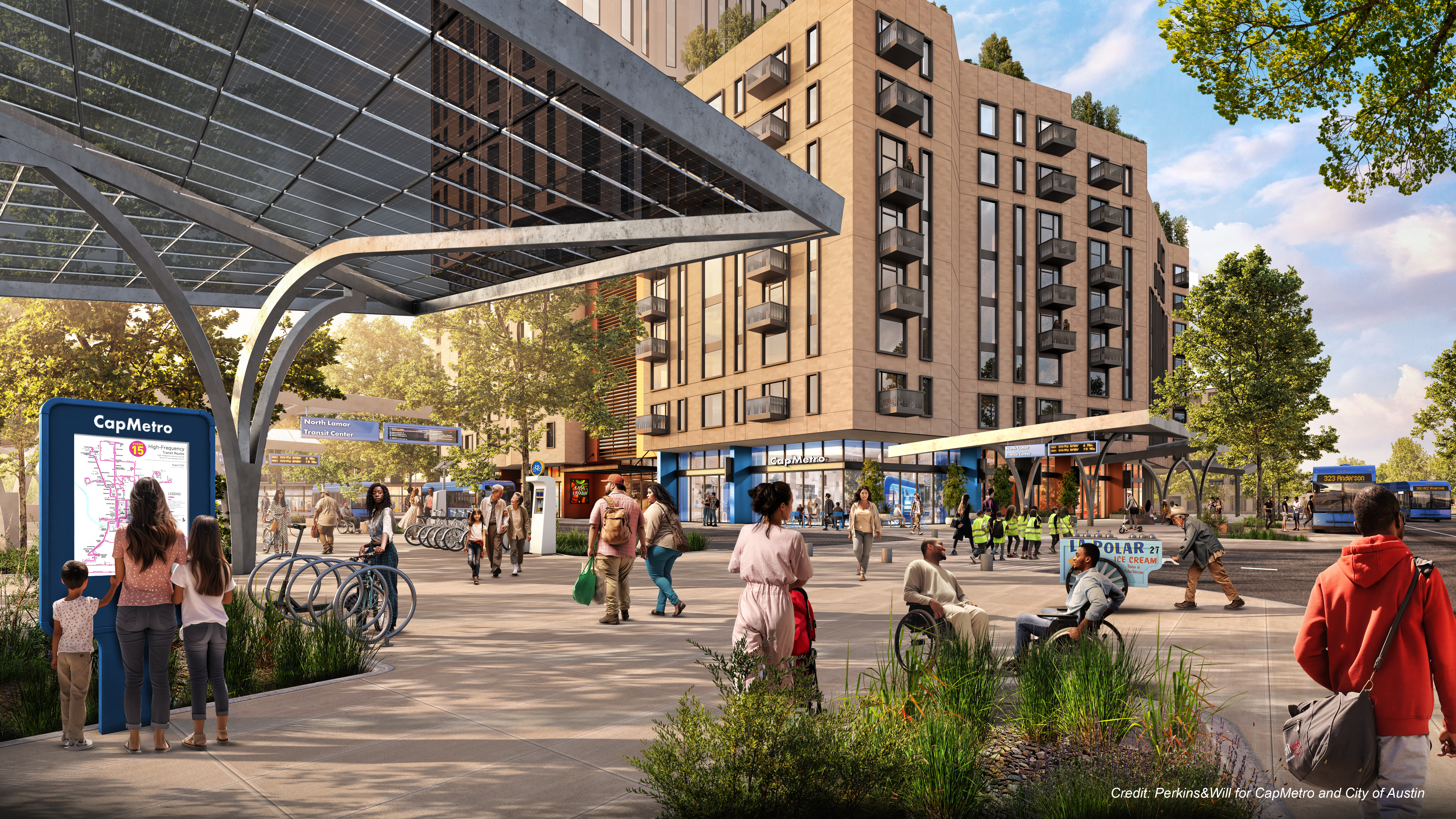
Rendering from North Lamar Transit Center Vision Plan
As a transit agency, we aim to integrate strategic investments into our TOD sites to increase transit choices, grow ridership and cultivate economic opportunities for all. CapMetro's TOD guiding principles are outlined in the updated 2025 TOD Implementation Policy.
We also have a responsibility to provide benefits for our community through developing our land with affordable housing, comfortable public spaces and relevant and affordable businesses. We also work with city partners to shape policies that will improve access to housing and services, support local businesses and grow transit connectivity.
Grounded in Community Values
As part of Project Connect, CapMetro has worked closely with the City of Austin (COA), the Austin Transit Partnership (ATP), the Community Advisory Committee (CAC) and compensated residents known as Community Connectors to create TOD policies and principles.
Our relationship with the COA has been essential to creating a foundation for successful TOD implementation, including:
- City Council-accepted (March 9, 2023) Equitable Transit-Oriented Development (ETOD) Policy Plan, accepted resolution; see Appendix F for the ETOD Policy Toolkit
- City Council adopted (May 22, 2025) South Congress Transit Center and North Lamar Transit Center Vision Plans; and
- ETOD Study (Executive Summary) summarizing the work that led to these
policies and plans.
Working closely with the COA has allowed us to accelerate our policy and development timelines. Through this partnership, we have made great strides in setting transit-and TOD-supportive policies including eliminating parking minimums, establishing a new TOD zoning overlay and codyifying the two station area vision plans in the Imagine Austin comprehensive plan. These policy changes will ensure that CapMetro meets the needs of the Austin community where residents can thrive.
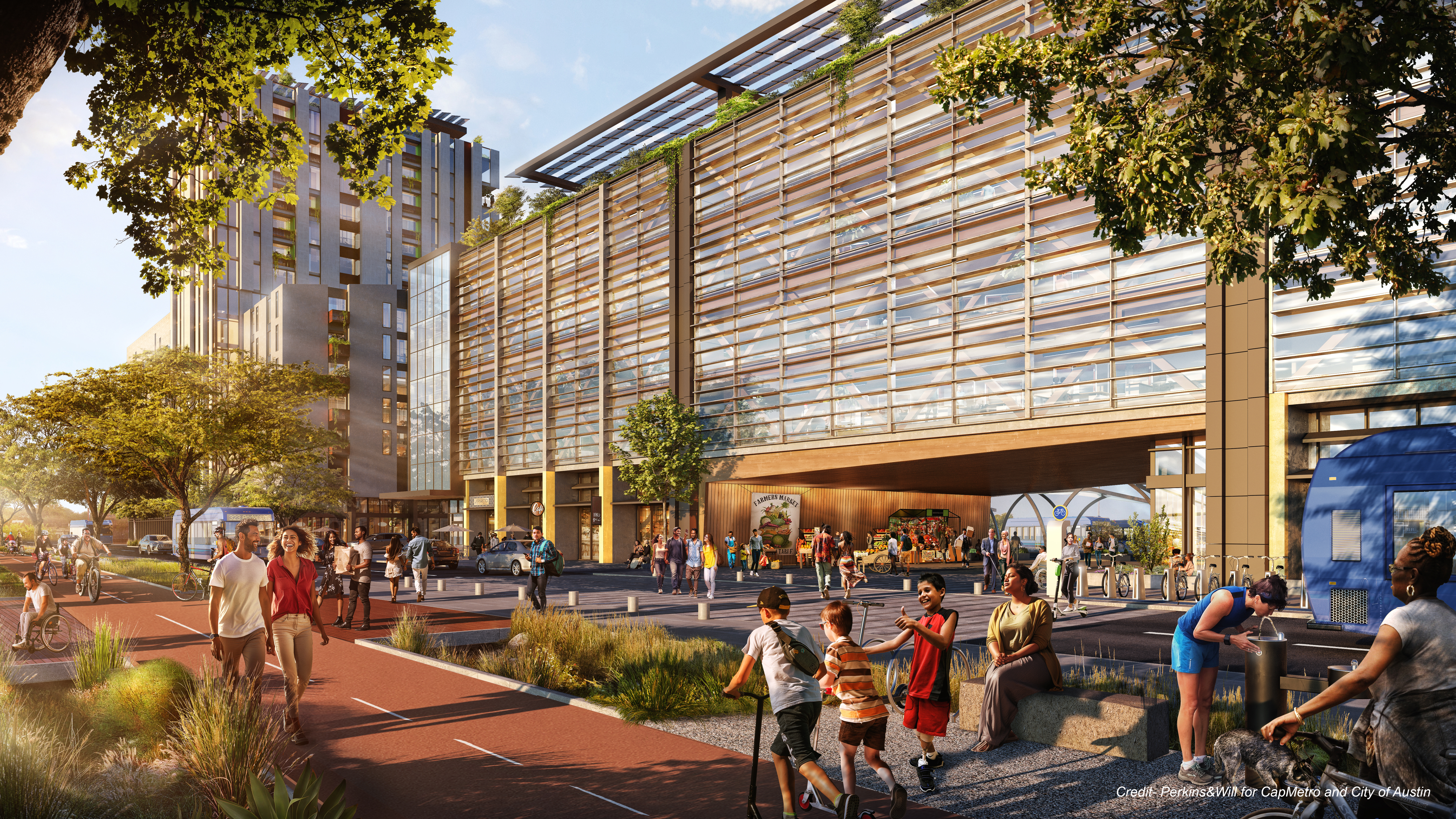
Rendering from South Congress Transit Center Vision Plan
Engage With Us
When available, we will share opportunities to get involved with TOD at CapMetro here.
Questions or comments? Email us at TOD@CapMetro.org
Resource Library
Our TOD Resource Library includes documents and summaries developed to provide a deeper look at the TOD process. Review these resources below.
Data Dashboards
Existing Conditions Dashboard
This ETOD study seeks to understand the goals and priorities of residents and workers in the study area to build a foundation for policy options.
ETOD 2022 Priority Tool Dashboard
The ETOD 2022 Priority tool focuses on station areas for future ETOD initiatives that support opportunity to achieve equitable outcomes.
